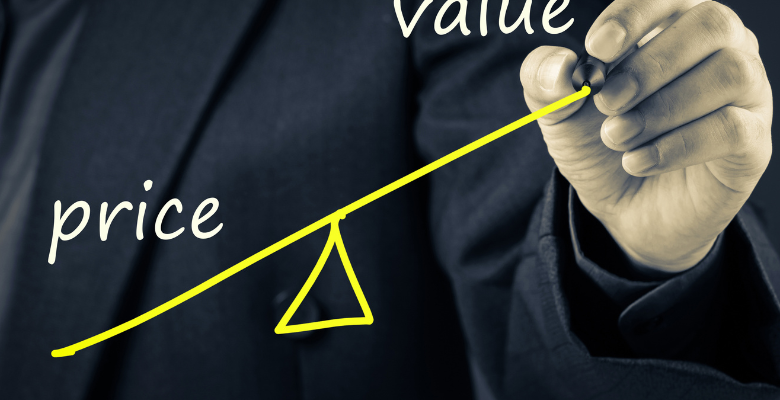keystone pricing step by step guide

Unlocking the key to pricing success is a vital strategy for any business. And when it comes to determining the retail price that will maximize your profits, Keystone Pricing might just be the answer you’ve been searching for! In this comprehensive guide, we’ll take you through everything you need to know about Keystone Pricing – from its definition and advantages to step-by-step instructions on how to implement it in your business. So get ready to unleash the power of strategic pricing and watch your revenue soar!
What is Keystone Pricing?
Keystone Pricing is a pricing strategy commonly used in retail businesses to determine the ideal selling price for their products. This approach involves setting the retail price at double the wholesale cost, resulting in a 50% profit margin. The concept behind Keystone Pricing is simple – by effectively marking up your product’s cost, you ensure that you cover your expenses and generate a healthy profit.
Advantages and Disadvantages of Keystone Pricing
There are several advantages to implementing Keystone Pricing in your business. It provides a straightforward formula for determining prices, making it easy to calculate and apply consistently across your product range. Additionally, this pricing strategy allows for healthy profit margins while remaining competitive within the market.
However, there are also some potential downsides to consider. One disadvantage of Keystone Pricing is that it doesn’t take into account variations in production costs or market demand. It assumes a fixed markup percentage regardless of factors such as seasonality or fluctuations in supply chain costs.
How to Determine the Retail Price with Keystone Pricing
To determine the retail price using Keystone Pricing, start by calculating the wholesale cost of your product – this includes all expenses related to manufacturing or acquiring it from suppliers. Once you have this figure, simply multiply it by two (or 2x) to arrive at the recommended retail price.
Factors to Consider when Setting a Retail Price using Keystone Pricing
While following the basic formula of doubling your wholesale cost can provide an initial guideline for setting prices through Keystone Pricing, there are other crucial factors you need to consider as well. These include market demand and competition levels within your industry; consumer perception and willingness-to-pay; any additional value-added features or services associated with your product; and ongoing operational costs required for running your business smoothly.
Implementing Keystone Pricing in Your Business
When implementing keystone pricing into your business model:
1. Begin by analyzing historical sales data.
2. Assess market conditions and competitors’ pricing.
3. Determine your desired profit margin and adjust markup accordingly.
Advantages and Disadvantages of Keystone Pricing
Keystone pricing, a popular method used by many retailers to determine the retail price of their products, comes with its own set of advantages and disadvantages. Let’s take a closer look at both sides.
One major advantage of keystone pricing is its simplicity. It’s an easy formula to calculate – simply double the wholesale cost to arrive at the retail price. This straightforward approach saves time and eliminates complicated calculations.
Another advantage is that keystone pricing ensures consistent profit margins for the retailer. By setting a standard markup percentage, businesses can maintain profitability across different product lines and variations in costs.
However, there are also some drawbacks to consider when using keystone pricing as your pricing strategy.
It doesn’t take into account market demand or competitive prices. In highly competitive markets where customers have access to price comparison tools online, keystone pricing may not be effective in attracting customers if competitors offer lower prices.
Keystone pricing may limit flexibility in adjusting prices based on market conditions or changes in costs. If wholesale prices increase significantly or if demand decreases unexpectedly, retailers using keystone pricing might struggle to adapt quickly without sacrificing profits.
While keystone pricing offers simplicity and consistent profit margins for retailers, it may not be suitable for all situations due to its lack of flexibility in responding to market dynamics and competition pressures. Retailers should carefully evaluate their specific business needs before implementing this strategy
How to Determine the Retail Price with Keystone Pricing
One of the key aspects of implementing keystone pricing in your business is determining the retail price. This step is crucial as it directly affects your profit margins and competitiveness in the market. So, how exactly can you determine the right retail price using keystone pricing?
You need to understand that keystone pricing involves doubling the wholesale cost to arrive at the retail price. To calculate this, simply take your product’s wholesale cost and multiply it by two. For example, if your product costs $10 wholesale, then your retail price would be $20.
However, it’s important to note that this formula may not work for every business or industry. Factors such as market demand, competition, and perceived value should also be taken into consideration when setting a retail price.
To ensure profitability while remaining competitive in the market, conducting thorough market research is essential. Analyze similar products or services offered by competitors and assess their pricing strategies. This will give you valuable insights into what customers are willing to pay for similar offerings.
Additionally, consider factors such as production costs, overhead expenses (rent, utilities), marketing expenses (advertising campaigns), and desired profit margins when determining your retail price.
Remember that finding the optimal balance between profitability and customer satisfaction is key. If your prices are too high compared to competitors offering similar value propositions or if they’re too low that they undermine profits – adjustments might need to be made.
By following these steps and considering all relevant factors when setting a retail price through keystone pricing methodology ensures that you strike a balance between profitability and competitiveness in today’s dynamic marketplace.
Factors to Consider when Setting a Retail Price using Keystone Pricing
1. Cost of Goods: The first factor to consider is the cost of goods or services that you are selling. This includes all expenses associated with producing or purchasing your products, such as raw materials, labor costs, and overhead expenses. It’s important to accurately calculate these costs in order to determine a suitable retail price.

2. Competitor Analysis: Conducting thorough research on your competitors’ pricing strategies is essential. Analyze their prices for similar products and identify any gaps or opportunities in the market. Understanding what your competitors are charging can help you position your product competitively while still maintaining profitability.
3. Target Market: Your target market plays a significant role in determining the appropriate retail price for your products or services. Consider factors such as their income levels, preferences, and perceived value of your offerings. If you’re targeting a luxury market segment, you may be able to set higher prices compared to targeting price-sensitive consumers.
4. Brand Image: Your brand image and positioning also affect how customers perceive the value of your products or services. If your brand is known for high quality and exclusivity, customers may be willing to pay more for it compared to lesser-known brands.
5.Demand Elasticity: Understanding demand elasticity is vital when setting retail prices using keystone pricing model.
If demand for your product/service is elastic (highly responsive), increasing the
price by even a small percentage could result in significant decrease in sales volume.
On the other hand , if demand were relatively less sensitive(e.g.inelastic) then an increase
in prices may not lead toy loss of significant sales volume
6.Profit Margin Goals- Finally,the profit margin goals should play crucial role .
Each company has different objectives regarding profitability.
Some companies might prioritize maximizing profits,others might aim at gaining larger share of customer base through low mark ups .
By considering these key factors while implementing keystone pricing, you can set a retail price that not only covers your costs and ensures
Implementing Keystone Pricing in Your Business
When it comes to implementing keystone pricing in your business, there are a few key steps you need to follow. First and foremost, you’ll want to determine your cost of goods sold (COGS). This includes not only the direct costs associated with producing or purchasing your products but also any indirect costs that should be factored into the equation.
Next, you’ll want to calculate the keystone price by doubling your COGS. This will give you a rough estimate of what your retail price should be. However, it’s important to note that this is just a starting point and may need adjustments based on other factors.
One factor to consider when setting a retail price using keystone pricing is market demand. If there is high demand for your product, you may be able to raise the price slightly above the keystone price. On the other hand, if demand is low or competition is fierce, you might have to lower your prices in order to attract customers.
Another factor to consider is customer perceived value. If customers see your product as high quality and unique, they may be willing to pay more than the keystone price. Conversely, if they perceive it as average or lower quality compared to competitors’ offerings, they may expect a lower price.
Additionally, keep an eye on competitor pricing strategies. If they are using keystone pricing or similar methods and their prices are significantly higher or lower than yours, it could impact how customers perceive the value of your product.
Regularly review and adjust your prices as needed. Market conditions can change quickly so staying adaptable will help ensure that you remain competitive while still maintaining profitability.
Case Study: Successful Companies Using Keystone Pricing
1. Apple Inc.
Apple Inc. is one of the most successful companies that have implemented keystone pricing. The tech giant applies a 100% markup on the production cost of its products to determine their retail price. By doing so, Apple ensures healthy profit margins while still competing in the highly competitive technology market.
2. Nike
Nike, the renowned sportswear brand, also follows keystone pricing strategies to set its retail prices. With a focus on premium quality and innovative designs, Nike maintains consistent profitability by applying a significant markup on its manufacturing costs.
3. Starbucks
Starbucks, the global coffeehouse chain, has successfully used keystone pricing to establish itself as a leader in the industry. By maintaining high-quality standards and charging customers twice the amount it costs to produce their beverages and snacks, Starbucks generates substantial profits while providing an exceptional customer experience.

4. Rolex
Rolex is synonymous with luxury timepieces and has been using keystone pricing for decades. By setting their prices at double or even triple their production cost, Rolex maintains exclusivity and prestige within their target market while maximizing profitability.
5. Coca-Cola
Coca-Cola’s success can also be attributed partly to its implementation of keystone pricing principles since its inception over a century ago. Despite intense competition in the beverage industry, Coca-Cola charges retailers twice what it costs them to produce each unit of soda pop they sell.
These are just a few examples of successful companies that have effectively utilized keystone pricing strategies to drive profitability without compromising product quality or customer satisfaction levels
Conclusion
Keystone Pricing can be an effective strategy for setting retail prices in your business. By using a simple formula of doubling the wholesale cost, you can quickly determine the suggested retail price for your products.
There are several advantages to using Keystone Pricing. It is easy to calculate and implement, making it suitable for businesses of all sizes. Additionally, it helps maintain consistent pricing across different channels and allows for healthy profit margins.
However, there are also disadvantages to consider. This pricing method may not account for variations in production costs or market demand. It is essential to evaluate other factors such as competition, target audience, and perceived value when determining the final retail price.
When implementing Keystone Pricing in your business, remember to consider various factors including production costs, market demand, competition levels, and customer perception of value. These considerations will help ensure that your prices are competitive while still allowing you to achieve a satisfactory profit margin.
Several successful companies have adopted Keystone Pricing as part of their pricing strategy. They have found that this method provides them with a solid foundation for setting their retail prices while maintaining profitability.



